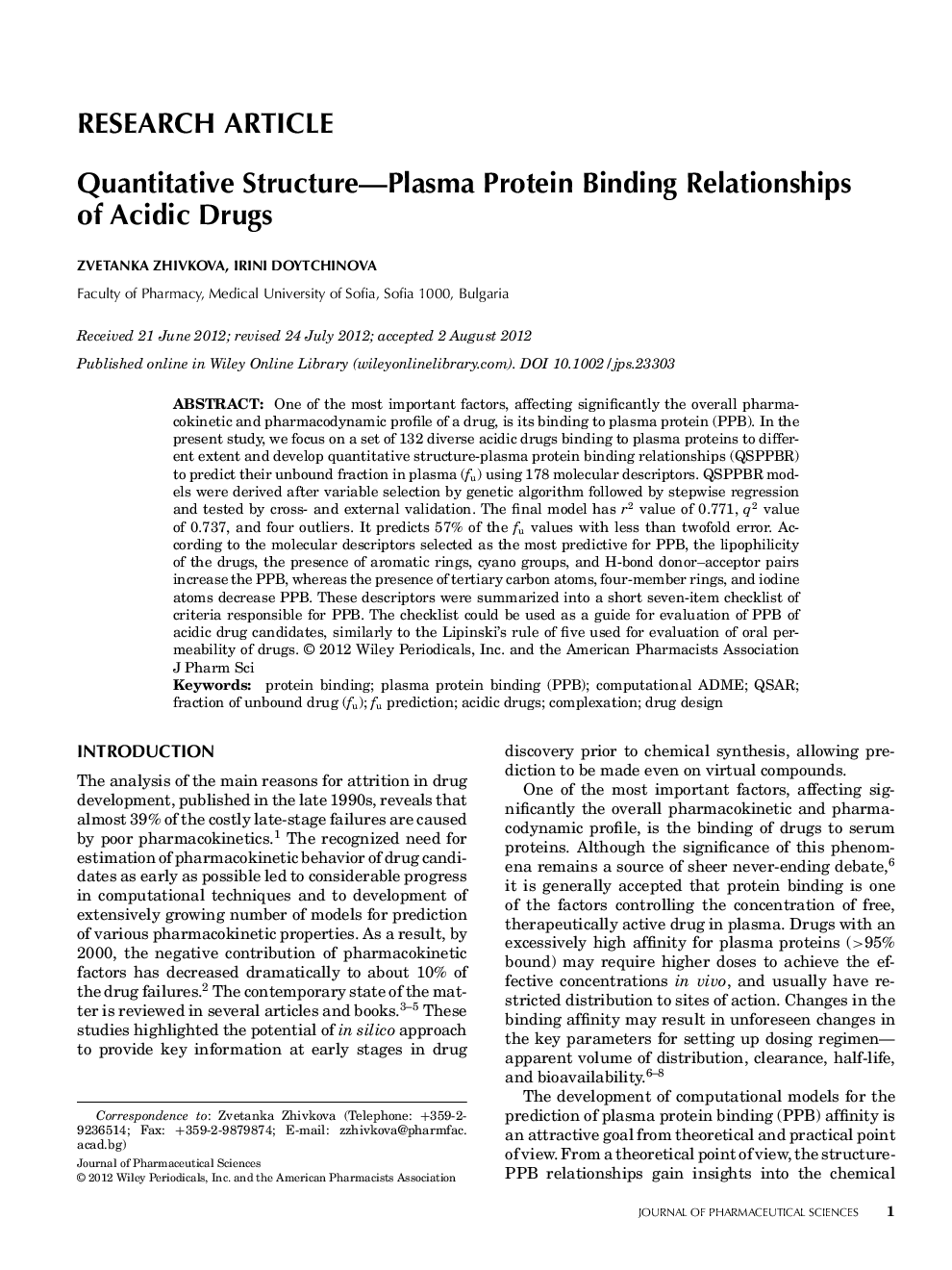| Article ID | Journal | Published Year | Pages | File Type |
|---|---|---|---|---|
| 2485654 | Journal of Pharmaceutical Sciences | 2012 | 15 Pages |
Abstract
One of the most important factors, affecting significantly the overall pharmacokinetic and pharmacodynamic profile of a drug, is its binding to plasma protein (PPB). In the present study, we focus on a set of 132 diverse acidic drugs binding to plasma proteins to different extent and develop quantitative structure-plasma protein binding relationships (QSPPBR) to predict their unbound fraction in plasma (fu) using 178 molecular descriptors. QSPPBR models were derived after variable selection by genetic algorithm followed by stepwise regression and tested by cross- and external validation. The final model has r2 value of 0.771, q2 value of 0.737, and four outliers. It predicts 57% of the fu values with less than twofold error. According to the molecular descriptors selected as the most predictive for PPB, the lipophilicity of the drugs, the presence of aromatic rings, cyano groups, and H-bond donor-acceptor pairs increase the PPB, whereas the presence of tertiary carbon atoms, four-member rings, and iodine atoms decrease PPB. These descriptors were summarized into a short seven-item checklist of criteria responsible for PPB. The checklist could be used as a guide for evaluation of PPB of acidic drug candidates, similarly to the Lipinski's rule of five used for evaluation of oral permeability of drugs.
Related Topics
Health Sciences
Pharmacology, Toxicology and Pharmaceutical Science
Drug Discovery
Authors
Zvetanka Zhivkova, Irini Doytchinova,
